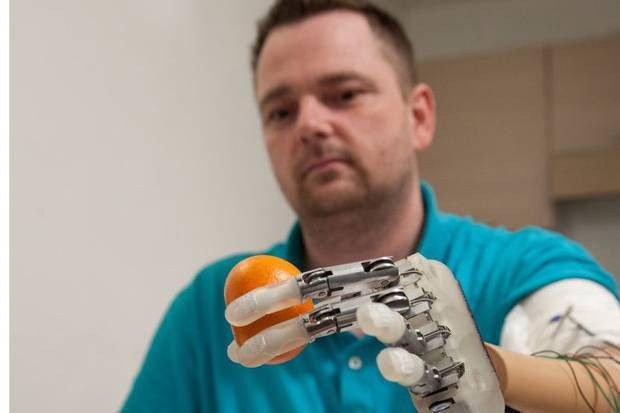Bionic Hand Restores Amputee's Sense of Touch in Prosthetic after Firework Accident

A Danish man is able to feel in his left hand for the first time in nine years, thanks to a pioneering robotic hand which sends electrical signals to the nerves in his upper arm.
Dennis Sorensen, who lost his left hand in a fireworks incident nine years ago, trialled the prosthetic limb for a month at the Gemelli Hospital in Rome in January 2013 and said he was able to detect the shape of objects, as well as feel whether they were soft or hard.
"It was just amazing," Sorensen said. "It was the closest I have had to feeling like [it was] a normal hand."
The bionic hand invention, detailed in the Science Translational Medicine journal, was developed by Swiss and Italian scientists and could be a major step forward for the prosthetics industry.
Silvestro Micera, leader of the Life Hand 2 project at Federal Polytechnic School of Lausanne, said: "This is the first time in neuroprosthetics that sensory feedback has been restored and used by an amputee in real time to control an artificial limb."
The robotic hand works by picking up electrical signals from the artificial tendons in the limb that control the fingers' movements.
The signals are sent down fine wires to four electrodes that the scientists have implanted in the sensory nerves in Sorensen's upper arm. They hope that a more polished bionic hand can be made with the wires running discreetly under the skin.
"I was more than happy to volunteer for the clinical trial, not only for myself, but to help other amputees as well," said Sorensen, who had been using a prosthetic hand since his accident. That prosthetic allowed him to detect muscle movement in his arm and open and close the artificial hand, but he was unable to feel anything with it.
The team behind the Life Hand 2 project plans further trials on other patients to improve the dexterity of the robotic hands. It could be years before the equipment is marketable.
Great care will need to be taken to prevent infection, which could be transmitted from the electrodes embedded next to the peripheral nerves, or from the wires running through the skin from the bionic hand.
© Copyright IBTimes 2025. All rights reserved.






















